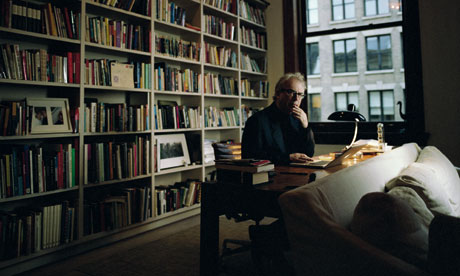
Clock-making and novel-writing are – in spite of a shared need for craftsmanship – rather different activities, requiring nigh-on incompatible skills. The clockmaker deals in absolute precision, working to a design that must forgo all extraneous elements; the novelist can't afford to be so pernickety, but must always venture into the unknown, and create the impression of untrammelled life.
It might be thought hubristic for an author to draw attention to this contrast, but in his 13th novel (his 12th for adult readers), Peter Carey does exactly that. About halfway through The Chemistry of Tears, Henry Blanding, a Victorian gent with an interest in clockwork devices – who has travelled to the Black Forest, the birthplace of the cuckoo clock, to have a giant mechanical bird (it starts as a duck and ends up a swan) constructed as a "magical amusement" for his dying son – encounters a "collector of fairy tales" in the mould of the brothers Grimm, a man in whom he senses an appreciation of misery and cruelty, a tendency to see "the possibility of violence" in everything around him. The collector's presence in the narrative is conspicuous because so tangential to the plot, and it doesn't take a very donnish turn of mind to view him as a representative literary sensibility, a kind of stand-in for the novelist himself. Another difference between the writer and the clockmaker is that the writer must, as Graham Greene once put it, have a "splinter of ice in the heart", while the clockmaker can go to his trade as a refuge from difficult emotions.
Henry's narrative alternates with that of Catherine Gehrig, a horologist at the Swinburne museum in London, who has been charged with reassembling the mechanical bird a century later. These two strands of the novel are linked not only by the construction (or reconstruction) of the clockwork animal, but by their narrators' grief: Henry's son may, he fears, have died before he has a chance to present him with his gift, while Catherine is suffering after the sudden loss of her lover and colleague Matthew Tindall, a married man and father, whom she is thus forced to mourn in secret.
Carey's exceptional storytelling talents are all on prominent display here. Catherine's and Henry's voices are lustily generated and expertly distinguished from one another; contemporary London and 19th-century Germany are conveyed in lightly distributed yet powerfully evocative physical detail; both narratives are invigorated throughout by a thrilling verbal energy, and an almost unfailing knack for alighting on the mot juste (the "quarrelling" of birds at dawn, the "pulp and fibre" of the human brain). These are precisely the qualities that have always characterised Carey's novels, and which have twice made him an eminently deserving winner of the Booker prize. His perennial themes – the tension between telling a story and telling the truth; the conflicted nature of postcolonial national identity – are distinctively modern concerns, which are nicely accommodated by his trademark brand of funky, roughly vocal, charmingly deranged picaresque.
But while The Chemistry of Tears pays lip service to those themes, the main questions it poses are of a larger, more traditional, and less abstract variety – and these are less easily absorbed into the novel's form. Carey draws an explicit comparison between the clockwork automata that so fascinate Catherine and Henry and the characters themselves. Human beings are also engines, he reminds us, "intricate chemical machines" – so what accounts for our non-mechanistic attributes, our capacity for love and cruelty, rage and grief? How is it that man-made machines can be pieced back together a hundred years after they have last seen the light of day, as Catherine reassembles Henry's automaton, when he himself is lost to the passage of time? As Henry puts it in the novel's starkest passage, "What happens when we die?"
The kind of novel Carey writes – a kind in which character is intimately related to plot – is perhaps not the ideal scaffold on which to hang such grand and unanswerable questions about the soul. In Catherine's sections (perhaps because she does less adventuring than Henry), a dissonance between form and content is particularly apparent. Her grief is always described fleetingly and retrospectively – "I ran a bath… I cried. I shampooed and conditioned and cried again" – without much variation, and without any attempt to inhabit the immediacy of her pain. This is a style well suited to picaresque, a mode that requires profusion of incident above depth of character, but it won't do for a novel that hopes to say something meaningful about human emotion. Catherine always seems to cry on cue; the more she does it, the less we're liable to believe in her grief. For all its brilliance, The Chemistry of Tears is a novel that speaks to the intellect rather than the heart – it is a complex and expertly crafted piece of machinery, but not an altogether convincing representation of life.

